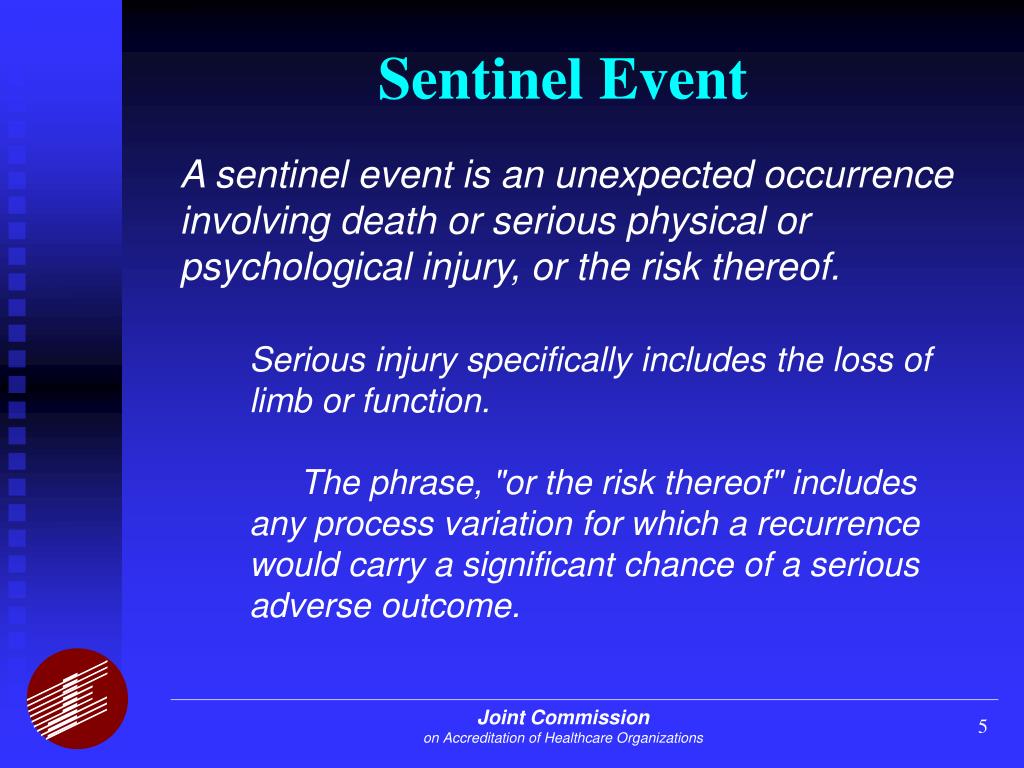

And the final example is a fall causing permanent harm. Another example is radiotherapy to the wrong body region. But in a medication error causing permanent harm, that certainly would be considered a Sentinel Event. Errors happen very commonly, but generally, they don't cause really bad harm.

Another example would be medication errors causing permanent harm. So some examples of Sentinel Events include surgery on the wrong site. I'll show you some examples in just a minute, but I also want you to know that depending on which state you're in, they may also have additional examples of Sentinel Events that would require a root cause analysis if they occur, and I'll talk about root cause analysis at one of the later lessons. Now, the joint commission has a very specific list of Sentinel Events. This information can help staff in all healthcare settings understand whether a fall should be reviewed as a sentinel event and can expand knowledge around. Now, the first definition that I'm going to mention to you is one developed by the Joint Commission and I think it does a really nice job capturing the essence of what a Sentinel Event is, and their definition is a patient safety event not primarily related to the natural course of the patient's illness or underlying condition that reaches the patient and results in death, permanent harm, or severe temporary harm. The most current version of the Sentinel Event Policy can be found in the SE chapter in the E-dition or Comprehensive Accreditation Manual.So the next topic, I want to talk to and a little bit more detail is Sentinel Event. Clarified content to determine whether a patient safety incident meets criteria for sentinel event review.Reorganized content to flow in a more logical order.
#Sentinel event definition how to
Clarified guidance on how to complete a comprehensive systematic analysis and development of an action plan to align with current Joint Commission requirements.Removed redundant verbiage and duplicative content.The final substantive revisions clarify the expectations for healthcare organizations’ collaboration with OQPS, according to the release, which include the following:

Permanent harm: An event or condition that reaches the individual, resulting in any level of harm that permanently alters and/or affects an individual’s baseline.



 0 kommentar(er)
0 kommentar(er)
